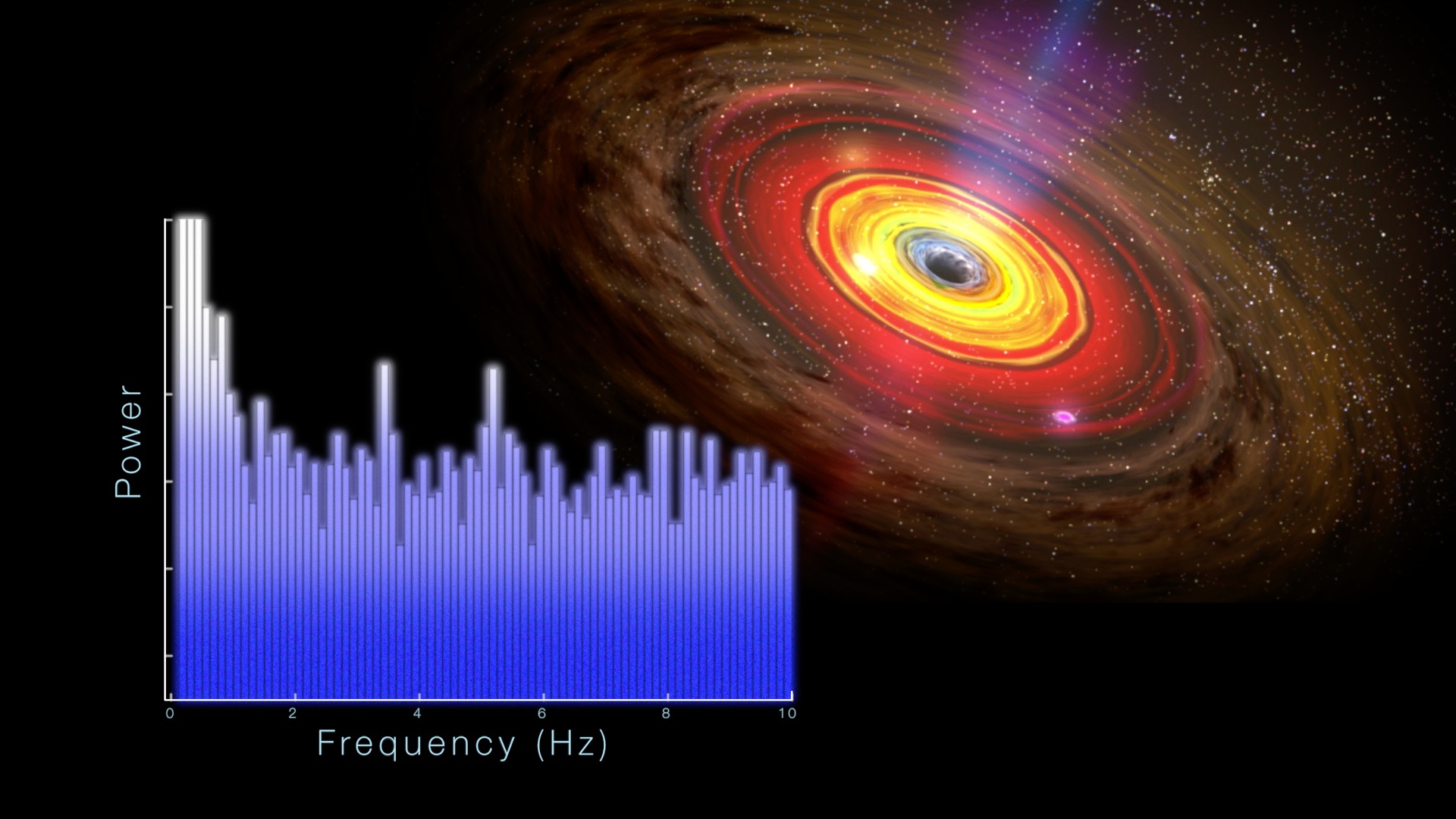Dark Discovery
Dying stars form modest black holes measuring up to around 25 times the mass of our sun. At the opposite extreme, most large galaxies contain a supermassive black hole with a mass tens of thousands of times greater. But in a galaxy about 12 million light-years away, scientists have found evidence that points to the existence of a rare breed of black hole weighing somewhere in between. The object, called M82 X-1, is the brightest X-ray source in the galaxy Messier 82. While astronomers have suspected it of being a midsize, or intermediate-mass, black hole for at least a decade, an accurate determination of its mass hasn’t been made until now. Using archival data from NASA’s Rossi X-ray Timing Explorer satellite, astronomers discovered that M82 X-1 weighs about 400 times the sun's mass, placing it among the few midsize black holes known. Watch the video to learn more.

Scientists confirm the existence of a rare type of black hole.
See how astronomers calculated the mass of M82 X-1 in this video.

As gas streams toward the black hole, it is heated to temperatures of millions of degrees, which is hot enough to emit X-rays.

X-rays emitted from M82 X-1 can be seen in this image taken by NASA's Chandra X-ray Observatory.

M82 X-1 is located in galaxy Messier 82, shown above.
Credits
Please give credit for this item to:
NASA's Goddard Space Flight Center
Messier 82 galaxy image courtesy of NASA/ESA/STScI
M82 X-1 X-ray image courtesy of NASA/CXC
-
Animators
- Scott Wiessinger (USRA)
- Dana Berry (Skyworks Digital)
-
Video editor
- Scott Wiessinger (USRA)
-
Narrator
- Scott Wiessinger (USRA)
-
Producer
- Scott Wiessinger (USRA)
-
Project support
- Aaron E. Lepsch (ADNET Systems, Inc.)
-
Writer
- Francis Reddy (Syneren Technologies)
Release date
This page was originally published on Tuesday, September 9, 2014.
This page was last updated on Wednesday, May 3, 2023 at 1:50 PM EDT.
